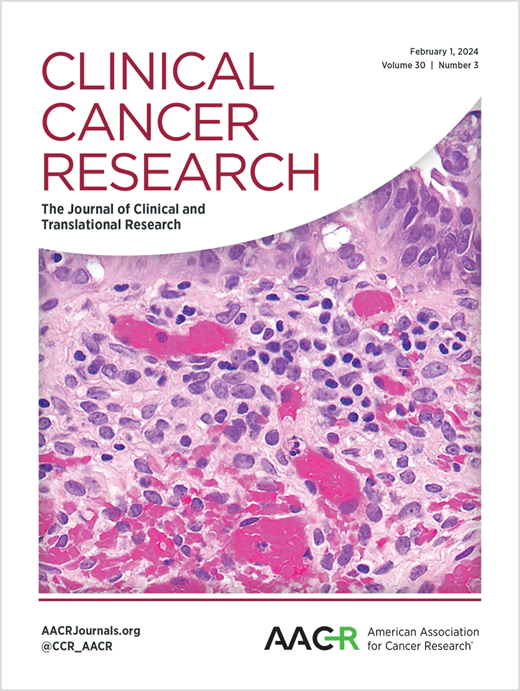在无细胞DNA干草堆中发现重排
IF 10
1区 医学
Q1 ONCOLOGY
引用次数: 0
摘要
循环肿瘤DNA (ctDNA)分析现在是一种广泛应用于实体肿瘤患者管理的诊断方法,包括基因融合驱动的肺癌。然而,准确检测ctDNA中的基因重排提出了相当大的技术挑战。因此,评估和比较检测方法的研究至关重要。本文章由计算机程序翻译,如有差异,请以英文原文为准。
Finding Rearrangements in the Cell-Free DNA Haystack
Circulating tumor DNA (ctDNA) analysis is now a widely used diagnostic approach in the management of patients with solid tumors, including gene fusion-driven lung cancer. However, the accurate detection of genetic rearrangements in ctDNA presents considerable technical challenges. Consequently, studies that assess and compare methodologies for detection are vital.
求助全文
通过发布文献求助,成功后即可免费获取论文全文。
去求助
来源期刊

Clinical Cancer Research
医学-肿瘤学
CiteScore
20.10
自引率
1.70%
发文量
1207
审稿时长
2.1 months
期刊介绍:
Clinical Cancer Research is a journal focusing on groundbreaking research in cancer, specifically in the areas where the laboratory and the clinic intersect. Our primary interest lies in clinical trials that investigate novel treatments, accompanied by research on pharmacology, molecular alterations, and biomarkers that can predict response or resistance to these treatments. Furthermore, we prioritize laboratory and animal studies that explore new drugs and targeted agents with the potential to advance to clinical trials. We also encourage research on targetable mechanisms of cancer development, progression, and metastasis.
 求助内容:
求助内容: 应助结果提醒方式:
应助结果提醒方式:


